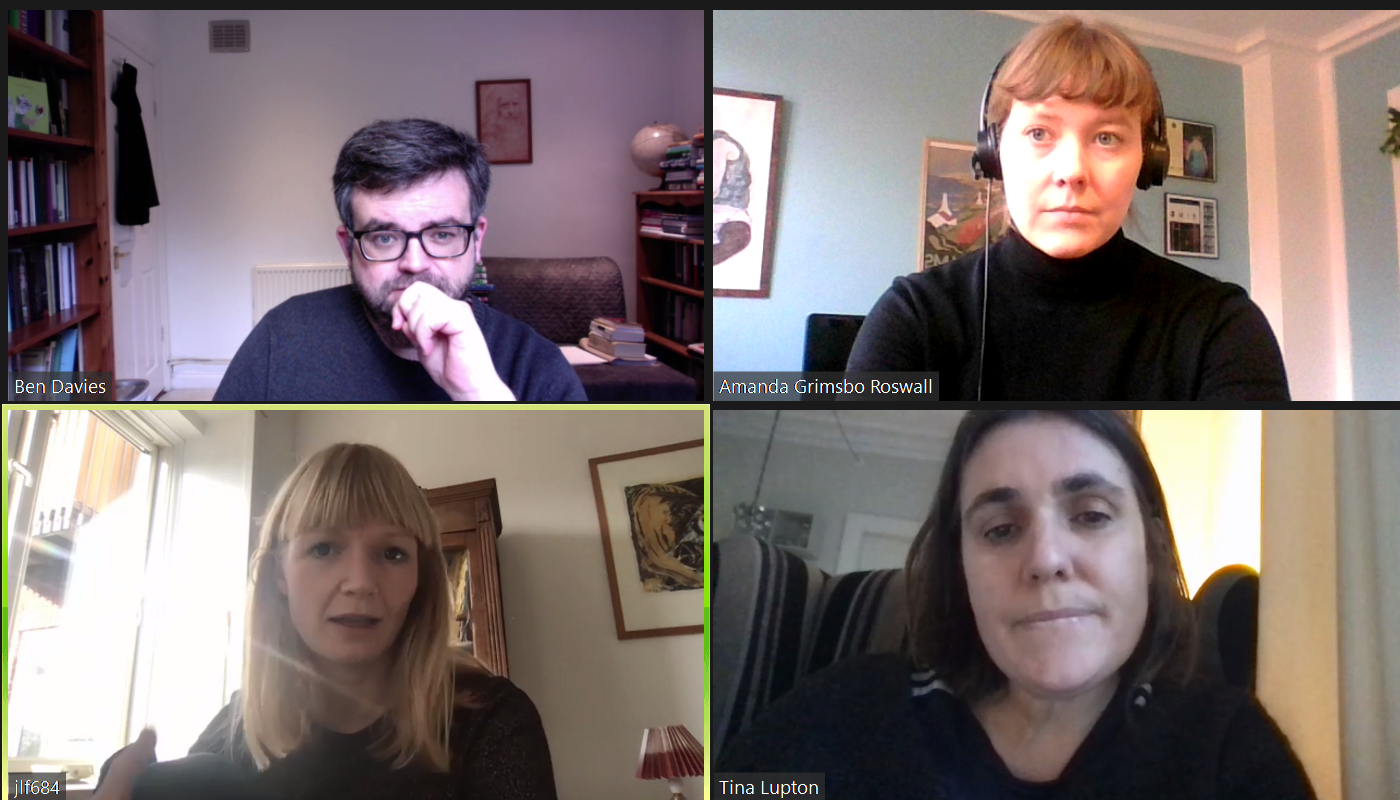Six months in Lockdown Reading
This article is written by researchers at STAY HOME’s partner project Lockdown Reading.

It’s six months since our project began and time for a little-half birthday celebration. When Lockdown Reading was launched back in September, we certainly didn’t imagine that we’d find ourselves here in late winter: still in the middle of the historical event we’d hoped to look back on in retrospect. We thought we’d all be gathered by now, our British-Danish team, planning conferences for the Spring and collaborating with our partners at Stay Home. Instead, we continue to meet online, our conference plans have been transformed into a podcast, and our interviews, which began in person, have moved over to zoom.
For all this, we’ve had plenty to be grateful for. The evidence that keeps pouring in, of how much novel reading matters to people’s lives far outside the university has been heartening. We may still worry about the state of the literature degree in Denmark and the UK. But none of us are worried any longer that the novel is a thing of the past. Our interviews confirm what 2020 bibliometrics also tell us, which is that book sales are definitively up. The data we’ve gathered gives fascinating new ways in which to read and explain those figures.
The length of this pandemic has also allowed us to see print becoming a living part of new loops of feedback. Some of the things people are reading now were written during the first Lockdown of Spring 2020. This makes it clear that print remains part of the mediated reality we are studying, and that its relative slowness as a medium does not always figure as disadvantage. In fact, so many readers have talked to us about the kinds of perspective and distance that novels give them, that we’ve given the book we’re writing about the project the title Coronatid/Corona Time, as a gesture to the ways readers have used novel reading to get a handle on the warps and woofs of temporality under lockdown.
In the six months we’ve been doing our interviews and writing the first chapters of this book, we’ve also seen debates about reading continue to rage within the literary academy. The question of whether scholars are now post-critical, obliged to look surface-wise at the things literature does and the many ways it can be meaningful, or whether we are experts in particular ways of interpreting texts, has compelled many debates in the academy this year. Reading and the politics of reading has been a hot topic.
We are grateful to have been able to watch this debate from the sidelines. Working sociologically with readers under these particular historical conditions, has given us a chance to think about the relation of these debates to what non-professional readers actually do. Beyond the university, readers, it turns out, do plenty of critical diagnosis of texts in their free time. Attachment of the kind often attributed to the fan or the genre reader may in fact, be better understood as the provenance of critics.
And yet, what postcritical approaches to reading have helped us recognise is that a reading is a very different thing to study from a text. The novels that people have read this year all have meanings as texts, as literary structures, as evidence of the years in which they were written. But they also participate in readings – and readings, as we’ve seen acutely this year, are events that occur in time and place. To read Jane Eyre or My Struggle or The Fall of the King in 2020 may, or may not be, to get the ‘meaning’ of the text. But it is certainly to make it speak under specific conditions. Here the lives we have been leading, in small rooms, over days that are both long and short, over a winter on which we do not yet have a historical perspective, become part of what it says. Our co-ordinates line us up with Victorian women who were trapped in rooms in their own ways; they make us receptive to history as something we feel inscribed in for the first time. They are both resonant and discordant with the scenes and experiences in the texts, and resonance and discord are themselves things to understand.
Here, halfway into our first year as a team, we are glad for the time we’ve had to explore all this so far, and for our unexpected experience as embedded reporters. But we are also very glad that when Corona Time comes out, it will be a study of something that happened in the past.